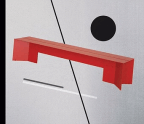Hilary Cottam

AR How did you discover design and identify it as a useful tool in your work?
HC Over 20 years ago, I was working in Africa and Latin America. I became obsessed with the failure of social programmes and with the way that well-meaning people and well-meaning organisations (often trying to solve social problems) always failed. Or a project might work, and then after a while it would stop working.
In Radical Help, I give an example of when I worked in the Dominican Republic, and I was asked by its ministry of education to look at why primary school attendance was so low. We were told that the challenge was that people were hungry and couldn’t afford the mandatory school uniforms. So, we ran focus groups and we heard that yes, of course, uniforms are too expensive, and we haven’t got school meals. And duly, new policies were designed. Much later, I went to live in a barrio in the Dominican Republic, where there was a brilliant school on the edge, but none of the people who lived in the barrio went there. I asked why and they said that they didn’t have any identity cards. It’s very complex, why they wouldn’t have had identity cards. But the point is, I needed to find ways that could connect real lives as they are lived to structures of power, to get out new information and to tell different stories, and that’s what first led me into design.
AR How did you integrate design into the practical experiments you conducted at the social enterprise Participle, which you ran for a decade as a prototyping lab?
As the Black feminist Audre Lorde said: ‘The master’s tools will never dismantle the master’s house.’ We needed a different way to work, and design brought three things. Firstly, if we think about the complexity of the social challenges we face today, we need interdisciplinary teams to work together and that, in and of itself, is a challenge. We need policymakers to work with practitioners, we need economists, we need social scientists, and so on. But we also need to find a way to have lived experience as part of those HC conversations, and not to flatten out other voices, or to allow certain power to dominate. Design provided the vehicle, the Esperanto within which everyone
You’re reading a preview, subscribe to read more.
Start your free 30 days





